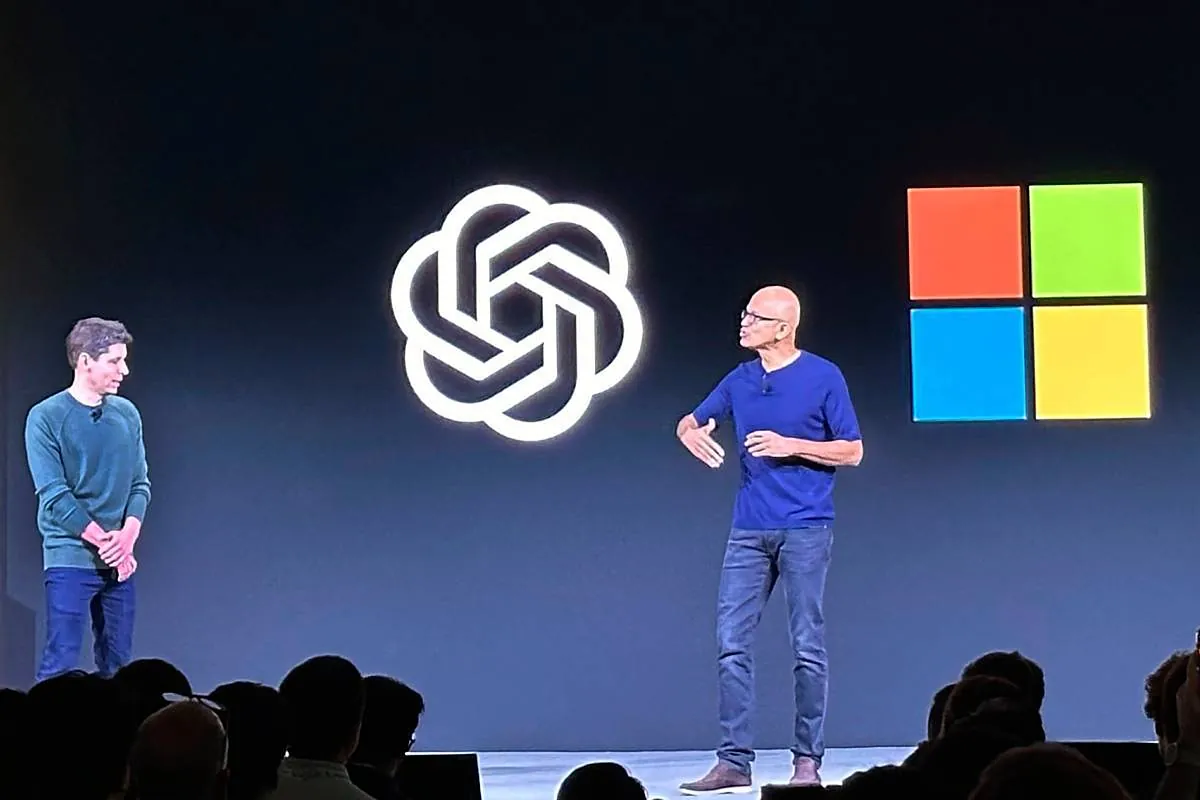Microsoft and Google have developed generative AI applications, but despite advancements, this technology still sometimes fabricates answers.
Generative artificial intelligence (AI) tools are expected to save companies significant time and money, according to Vik Singh, one of the vice presidents at Microsoft. However, these emerging applications still have much to learn, particularly in terms of acknowledging their own shortcomings.
“What these models really lack today, to be honest, is that they don’t raise their hand and say, ‘Hey, I’m not sure, I need help,'” the senior executive explained in an interview with AFP.
Since last year, tech giants Microsoft, Google, and their competitors have rapidly deployed generative AI applications like the conversational robot ChatGPT from OpenAI, which produce all kinds of content on demand and give users the illusion of being omniscient. However, despite these advancements, they still occasionally “hallucinate,” meaning they fabricate responses.
This is a significant problem that needs addressing, according to Singh, who oversees Microsoft’s AI assistant tools known as Copilot. This issue is critical because the main clients of this American tech giant’s tool — namely businesses — cannot afford to have false narratives generated, not even occasionally.
“Very smart people are working on this issue (…) to ensure that the models can identify when they don’t know and ask for help,” he promised. In his view, a more humble model would not be less useful. He cited the example of an AI assistant specialized in customer service. “I talked to a company that spent 8 dollars per inquiry every time one of its representatives responded,” he said. Even if in half the cases the machine had to defer to humans for solutions, the company would “still achieve huge savings.”
Productivity
Vik Singh joined Microsoft in January and took over the teams developing the Copilot assistants specialized in sales, accounting, and services this past summer. Little-known to the general public, these commercial applications allow tech groups to justify their massive investments in generative AI, as they are beginning to generate revenue.
According to Windows Group, Copilot conducts research for sales representatives, allowing them time to call clients. Lumen, a telecommunications company, “saves around 50 million dollars a year,” Singh emphasized.
The startups at the forefront of the generative AI revolution promise systems that are so advanced they will help to “elevate humanity,” in the words of Sam Altman, the head of OpenAI, which is primarily funded by Microsoft. But for now, the new technology is essentially used to enhance productivity and, therefore, profitability.
Singh’s teams are working to integrate Copilot directly into the group’s software and make it more autonomous, meaning users will increasingly need to rely less on them directly. “For example, you are a sales representative,” the executive suggested. Two weeks after a conversation with a customer, the AI assistant “can prompt you to follow up with the contact or, better yet, automatically send an email on your behalf since the task has been pre-approved.”
Employment
Thus, before finding a solution to problems as large as global warming, AI is supposed to free humanity from tedious and repetitive tasks. “This is just the beginning. We are focusing first on the easiest applications to implement,” Singh noted.
However, a recurring question hangs in the air: Will all these productivity boosts lead to job losses? Leaders from major companies, such as K. Krithivasan, CEO of the Indian tech giant TCS, have stated that generative AI will practically eliminate call centers.
Yet Singh, like many other Silicon Valley executives, is confident that technology will make humans more creative and even create new jobs. As proof, he cites his experience at Yahoo.com in 2008, when a dozen editors selected articles for the homepage. “We had the idea of using AI to optimize this process, and some people said: ‘Oh God, what will happen to the employees?'” he recalled. The automated system allowed for quicker content refreshes, thus increasing clicks on links, but it also heightened the need to generate new articles. “In the end, we had to hire more editors,” Singh concluded.



